Home|Glossary|Links|Journal|Maps
THE
BIG WAIT
Not
too far from Mark in the Coffee House, sitting beneath some old style
sleds and snowshoes that decorate the wall, I spy Erin Pettit. Erin
is a glaciologist with Portland State University, a friend from off
the ice, and serendipitously, one of my current roommates as well.
She is waiting too – to get off continent. Erin and her team
spent five weeks camped by Taylor Glacier. They were studying calving,
which is the breaking off of ice pieces from a glacier’s edge.
Unlike glaciers in more temperate climates that slowly dip down to
their ends, dry valley glaciers halt abruptly in 30 meter high vertical
cliffs. Erin and her team have been making measurements to try and
understand why that is. They are measuring ice temperature, “listening”
to the glacier crack using seismometers, and “looking”
inside the glacier using ice-penetrating radar. The radar reflects
differently off of soil/bedrock and ice surfaces allowing the team
to map ice thickness without having to drill a bunch of ice cores.
| 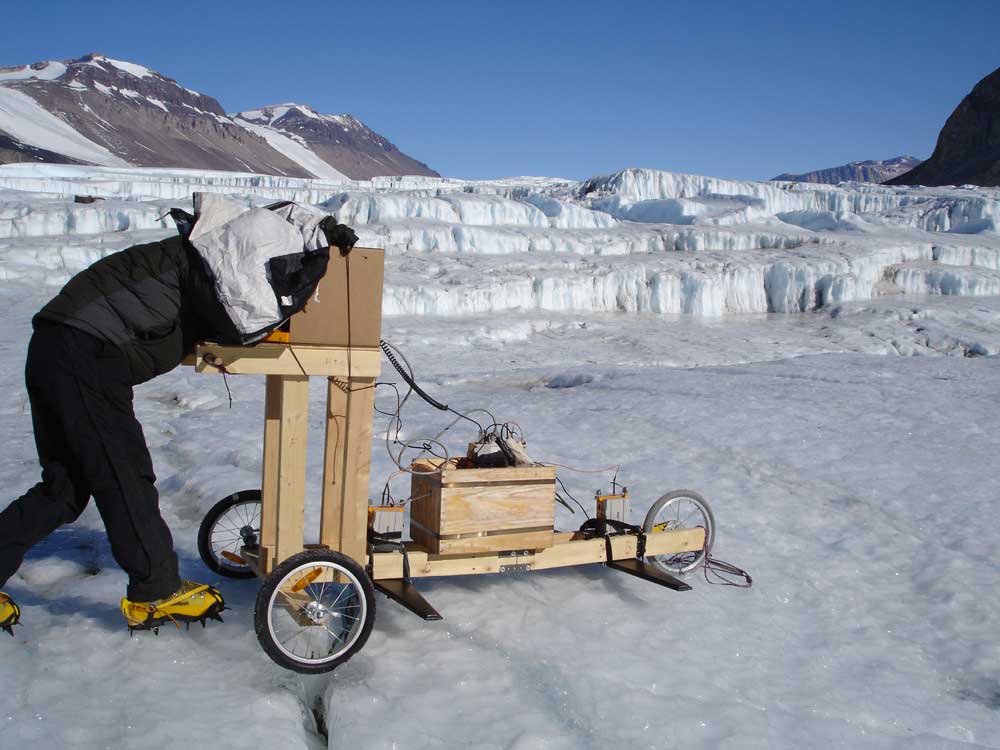
Using
ice-penetrating radar to
“look” inside a glacier

“Home”
|
 Inserting
thermometers
Inserting
thermometers
into a crevasse

Erin
and mountaineer Matt Szundy install instruments in an ice
cliff
|
Erin asks what Kirk, Ray, and I are
up to. We are waiting as well. It has been a week since our arrival
in McMurdo and we’re anxious to get out to the Onyx River in
the Wright Valley, Ray especially, because his time in Antarctica
is quite limited. By most accounts the Onyx at 12 miles, is Antarctica’s
longest river. It starts at Lake Brownworth, named after U.S. Geological
Survey engineer Frederick Brownworth, Jr., and it ends at Lake Vanda
named after a sled dog used in the British North Greenland Expedition.
The river itself was named by physicist Colin Bull who reportedly
liked the juxtaposition of the letters O, N, Y, and X. A
New Zealand team started measuring flows on the Onyx in the late 1960s.
The Onyx flow record is the longest in the valleys and is thus quite
important. The river currently has two gauges that measure water depth
(also known as ‘stage’) and temperature at 15-minute time
intervals. A relationship has been developed to convert the stage
to discharge in liters per second. Ray would like to telemeter that
data. Telemetry involves the transmission of data from one location,
often remote like Antarctica, to another location usually where the
data user is, like a U.S. Geological Survey office in Wyoming.

Telemetry equipment at the
Onyx River
gauge by Lake Vanda.
[Photo by: Kirk Miller]
|
Our
team won’t know if Ray’s telemetry plan will work
though until we go out to the field. So together with others
in the Coffee House, we wait. We wait with optimism - “We’ll
get out there. It’s just a matter of time.”; with
pessimism - “I’m not holding my breath.”;
with acceptance - “It’s a harsh continent.”;
and perspective – “Things could be worse.”
And we wait with backup plans A, B, and C, and the knowledge
that we will have to come up with a new plan when things change
unexpectedly, which they will.
Of all the people I have met
thus far though, Lou has been waiting the longest. She is a
driller on the WAIS Divide team with Mark. Lou arrived in early
November and is still in town. I’m not quite sure how
she hasn’t gone crazy. When I run into her the next morning,
I’m not feeling optimistic about either one of our teams’
departures. Fog has enshrouded McMurdo yet again. But Lou isn’t
just optimistic this morning, she’s sure – “Today’s
the day! Willy Field (the airport) is clear and so is the WAIS
Divide!” Her exuberance is catching and I start to allow
myself to think that we might actually be leaving too. I head
up to the top of a building overlooking the helicopter pad.
The fog has started to break, and the propellers of the helicopter
fleet are turning. We get word that it’s a go. We grab
out bags, dress in our ‘Extreme Cold Weather’ clothing,
and head to the helo-pad. After a 40-minute flight across McMurdo
Sound, we see the ice-free Dry Valleys. They are intriguingly
foreign, yet now in my 3rd season, reassuringly familiar as
well. The helo leaves drops us off and leaves.
|
Waiting
for Helicopters
In the Dry Valleys, much of our movement seems to revolve
around helicopters.
The pilots transport us and all our gear between lake basins
and between valleys.
Not surprisingly, we spend a bit of time waiting for helicopters.
|
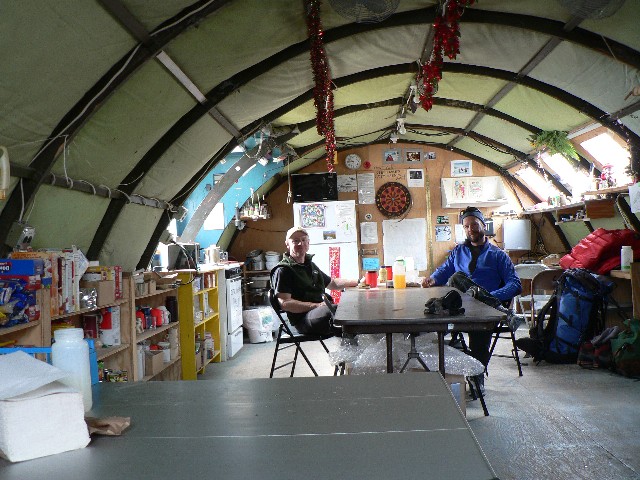 Kirk and Ray wait
for a helicopter flight inside the hut at Lake Bonney. The helo
flight ended up being canceled because of bad weather in McMurdo.
Kirk and Ray wait
for a helicopter flight inside the hut at Lake Bonney. The helo
flight ended up being canceled because of bad weather in McMurdo.
Photo by: Kirk Miller |
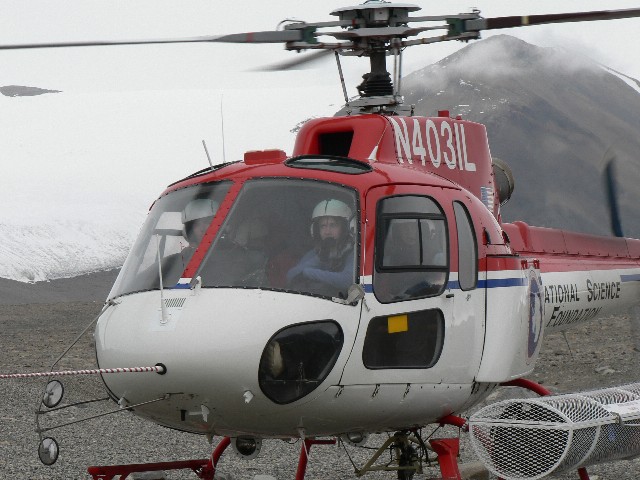 Melissa Northcott,
Lydia Zeglin, and Ray Woodruff wait for the helicopter to take
off.
Melissa Northcott,
Lydia Zeglin, and Ray Woodruff wait for the helicopter to take
off.
Photo by: Kirk Miller |
|
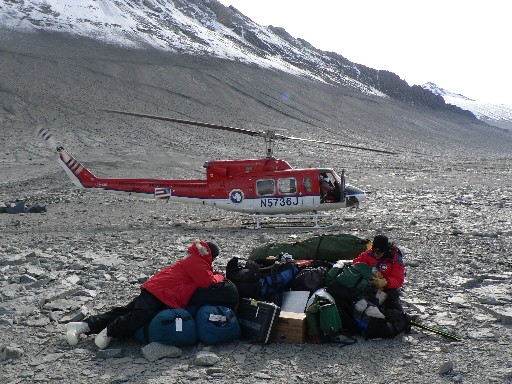
Ray
and Karen hold down the just off-loaded gear while waiting for
the helicopter to take off. Photo by: Kirk Miller
|

During
bad weather, Liz, Nick, Melissa, Candy, and Gifford of helo
operations wait too.
|
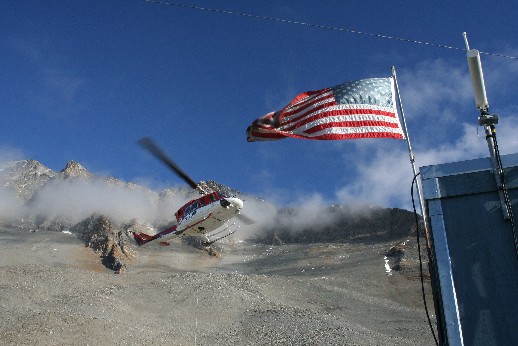
Waiting
no longer.
Photo by: Liz Bagshaw, University of Bristol, England |
| After
the rush of the offload, Kirk takes a few minutes to look around
and soak it all in. We are waiting no longer. We set up camp
by a small hut that the New Zealand Antarctic Program has graciously
let us use and head straight to the Onyx, happy to finally be
“there.” Eventually we return to camp for dinner,
get the Whisper Lite stove going, and settle in for our dehydrated
meals. I wonder if Mark and Lou have finally made it out to
the WAIS Divide and if Erin has gotten off continent today like
she was supposed to. I wonder how our field season will go.
I don’t know. I guess I’ll just have to wait to
find out.
- Karen |
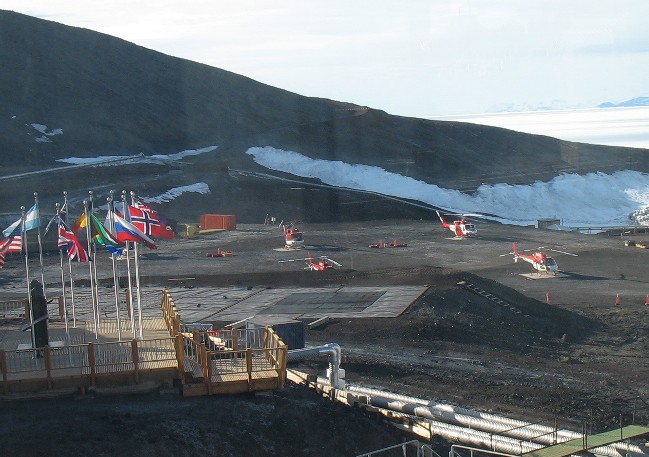 Helicopter
pad at
Helicopter
pad at
McMurdo Station |
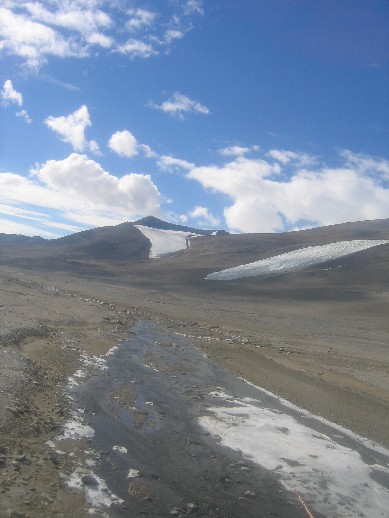 Wright
Valley View
Wright
Valley View |
Reference
Burroughs WJ, Crowder B, Robertson T, Vallier-Talbot E, Whitaker R.
The Nature Company Guides – Weather. Sydney, Australia: Time
Life Books, 2000.
|
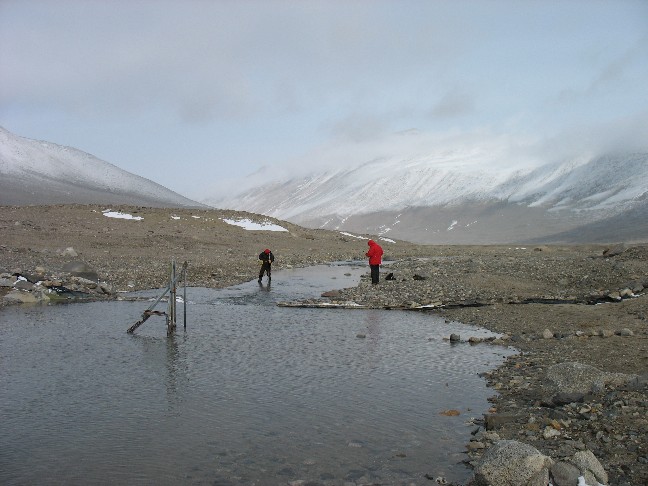
Gauging the Onyx
|
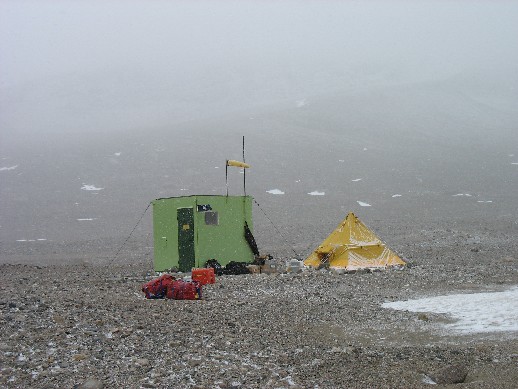
Wright
Valley Camp |
|








